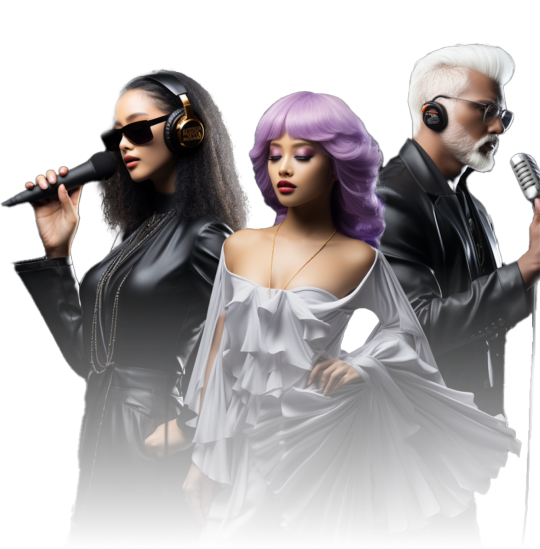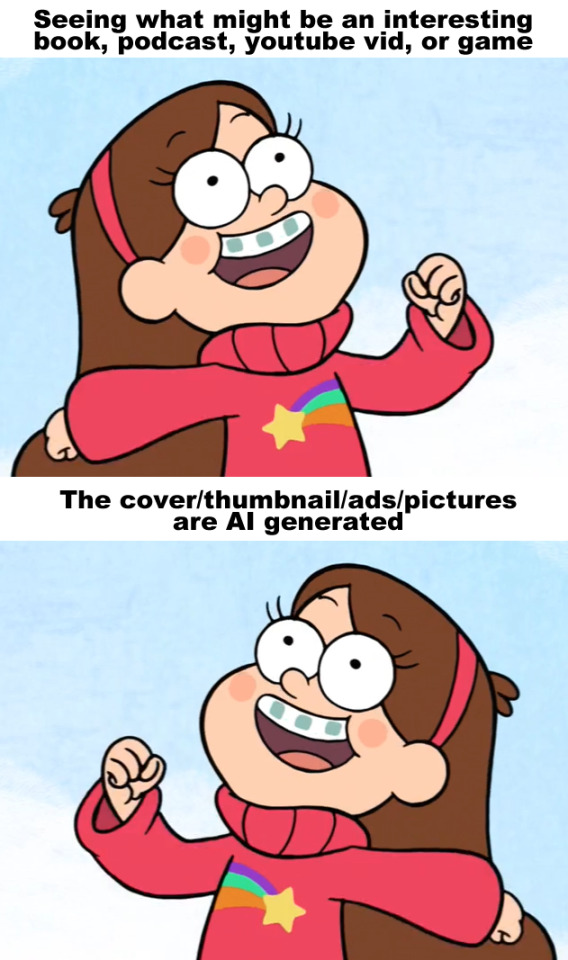#ai voice generator
Text
going to H-E double hockey sticks with this... Anyway, here it is. LINZINNNN
Have a great Tuesday~
38 notes
·
View notes
Audio
AI AUDIO -- tw: screaming, bloody?? sounds. [just a preview!!]
#I'm lowkey so proud of this like fuck#I worked hard to get elevenlabs to actually sound like James so this is a labour of love#like even REMOTELY and this still isn't perfect but god damnit my thirsty ass will take it#also credit to jxm slowed on youtube for smooth criminal#myaudios#James Patrick March#AHS Hotel#American Horror Story Hotel#AI voice generator#james march x reader
149 notes
·
View notes
Text
YA’LL
I FOUND MY MIDDLESCHOOL FANCOMIC OF PHINEAS AND FERB!
I thought it got thrown out during a move, but now I’m super excited cuz I wanna make a dubbed pmv!
So I have a mighty need to know; are there phineas and ferb voice generators, and how do I find/use them??
#phineas and ferb#fan art#fan comic#art help#ai voice generator#help plz and thx#I wanna make this thing a reality so badly but I don’t wanna spoil it with pics#no the art isn’t master quality BUT#it’s coherent#I wrote an actual script for it#it could work as an actual short episode for the show#and it’s just cute lol#:3#plz plz plz help me make this a reality#any help is appreciated#I’ve got the art and animation stuff handled!#I just need help with the dubbing!#k thx bye
2 notes
·
View notes
Text




we’re really out here living in an AI dystopian hellscape and this shit has just begun… the future is grim…
#ai#anti ai#wotc#wacom#ai scam#ai scammers#yall warn the less intuitive people in your life about the voice scam stuff… scary af!#ai art#ai generated#ai image#ai artwork#aiartcommunity
22K notes
·
View notes
Text

Wavel AI delivers text-to-speech services that dub your videos 10x faster. With 250+ voices in 40+ languages, we make high-quality dubbing 5x more affordable. Start now!
0 notes
Text
Discover Cutting-Edge AI Voice Generator Tools | Find Best Solution
Discover cutting-edge AI voice generator tools curated to meet your specific needs at Find Best Solution. Our platform offers a comprehensive directory of top-notch tools and resources, including text-to-speech engines, voice synthesizers, and more. Whether you're looking to create voice-enabled applications or enhance accessibility features, Find Best Solution has everything you need to succeed. Explore now and find the best AI voice generator tools for your projects.
0 notes
Text
Unleash Your Voice: Sing Once, Create Your AI Sound with Wondera!

Transform your voice effortlessly with Wondera's AI Voice Generator! Sing just one song to craft your unique AI voice. No more language barriers or skill limitations – Wondera makes singing accessible for all. Join our community today to explore infinite creative possibilities and redefine your musical journey. Experience the magic of Wondera – where every voice is special, and every song is a work of art!
1 note
·
View note
Text
The Future of Synthetic Media | CogniSpark Media Studio
What is synthetic media?
Digital material that is made or altered artificially, as opposed to being photographed or recorded with a microphone, is referred to as synthetic media. More important examples to understand include audio, video, and image content created by computers. These may be produced using methods like deep learning, computer graphics, and other artificial intelligence systems.
What happens during the generation of Ai synthetic media?
Synthetic media is generated by AI algorithms that use machine learning models to recognize and analyze patterns in input data, and then perform tasks without human intervention. It may sound complex, but it’s not as difficult as it seems.
With the advancements in deep learning, we can now create text, images, voice, and video content with such high precision that it’s nearly impossible to distinguish between real and synthetic.
However, humans have an innate ability to spot even the smallest errors and discrepancies when it comes to reproducing human likeness. This is known as the “uncanny valley” and is the reason why most digitally created characters in movies today still seem a bit off. This is why it’s relatively easy to spot fakes.
But, technology is constantly evolving, and it’s only a matter of time before we will be able to create Hollywood-grade films from a browser. We believe this will happen in the next 5-10 years.
These new technologies will revolutionize the way we bring our ideas to life, replacing physical processes with entirely digital ones. And it’s amazing.
Best way to explain synthetic Media:
Consider the process of creating a 5-minute video as an example.
The traditional method of producing a video includes writing a script, hiring a film crew, actors, renting studio and equipment, and the list goes on. It’s a time-consuming and costly process that only begins with the filming.
When you factor in the additional steps of editing, translating and updating the footage, it can become overwhelming.
Unlike traditional videos, AI-generated videos can be created in minutes and can be updated at any time. However, with the help of the AI video generator the creation of text to video is becoming simpler and more accessible. By using AI media studio, you can now generate videos directly from your browser by simply typing in your script in any language and selecting an avatar, or even by creating your own avatar and voice.
This new fully digitized way of creating content has far-reaching implications. Many companies are already using these solutions to create videos for various purposes such as employee training, marketing, and internal communications. And we’re only talking about video here, text, image, and voice are also being impacted by synthetic media. The future of synthetic media
Our company’s position on this matter is clear: we are excited about the future possibilities of synthetic media and understand the responsibility that comes with it. We believe that building artificial intelligence and other powerful technologies requires ethics to be at the forefront, not an afterthought. This must be reflected in both our company policies and the technology we develop.
We are in the early stages of a significant shift in content production, moving from the physical world to digital, opening new opportunities. As an example, we predict that it will soon be possible to create Hollywood-grade films using just a laptop.
The internet will evolve from static text-based interactions to dynamic and interactive ones, and new modes of communication will forever change the media landscape.
As with any technology, we do not yet know what the final form will look like or how the relationship between human creativity and cutting-edge technology will shape the future of content creation and consumption. But we are excited to explore the possibilities with curiosity and optimism.
Conclusion:
In conclusion, synthetic media is a rapidly advancing field that is being driven by the development of artificial intelligence and machine learning. The technology is allowing for the creation of realistic text, images, voice and video content that is indistinguishable from real media. This opens new possibilities in content creation and has implications for the way we communicate and consume media.
At CogniSpark Media Studio, we are excited about the potential of this technology and understand the responsibility that comes with it. We believe that building AI products such as AI voice generator, AI video generator and other powerful technologies requires ethics to be at the forefront, not an afterthought. This is reflected in our company’s policies and the technology we develop.
0 notes
Text
🎙️AI voices in education?
Explore the benefits and challenges of text-to-speech technology in our latest blog post! 📚🤖
🔗Link: https://revoicer.com/text-to-speech-robot-technology-in-education
🤓Discover how text-to-speech apps like Revoicer improve accessibility, personalize learning, offer multilingual support, and boost student engagement.
Find out why this technology is a game-changer for education!
0 notes
Link
An Introduction to the Top 10 AI voice generators
0 notes
Text

dusting off the ol' running Mabel meme after all these years because i am Tired
#gravity falls#fuck gen ai#if you cant be arsed to care about your own thing then neither can i :B#same goes for generated music and voices too that shit is disappointing#'wow who's voice is this?' guess i'll never know bc heckin ursula over here decided to steal it via non-crediting contraption
988 notes
·
View notes
Text
Asking the voice actors on my video game project to consent to having AI models of their voices created specifically and exclusively for the purpose of making the dialogue say the player character's name out loud at appropriate junctures no matter what the player chooses.
1K notes
·
View notes
Text
Using Text-to-Speech Voices for Podcasting
You must be aware of podcasting, since it has had an unheard-of rise in popularity over the past few years as an informative and entertaining medium. Globally, there are currently over 464 million podcast listeners, and by 2024, that number is predicted to rise to 504.9 million. Podcasts have developed from specialised listening to popular entertainment, providing a forum for a range of topics and voices. Text-to-Speech (TTS) voice integration has become more popular among media businesses, advertising, and content creators as the podcasting market has grown.
With Automated Podcasting, artificial intelligence (AI) synthetic voices take centre stage and tell engaging stories in a novel way. We'll discuss the advantages and difficulties of automatic podcasting in this blog.
How Can You Benefit from AI Text-to-Speech?
Could you imagine if someone told you that you could create a podcast just by using your voice to record every word without having to purchase any audio equipment? Yes, that is conceivable. An additional option for people who wish to cut down on the complexity, expense, and duration of podcast or audiobook production is text-to-speech. You may convert your material into natural voice using the most recent advances in human-sounding text-to-speech technology.
You can easily turn your written content into spoken words using TTS podcast generation, eliminating the need for laborious traditional recording techniques. This is a huge step forward in the automation of audio content, cutting down on the expenses, time, and hassles of traditional podcast creation.
Obtain a Greater Audience
Now that you have automated podcasting with TTS technology, you can reach a wider audience with your material. If you produce content, you probably already know how difficult it may be to reach a worldwide audience. With the aid of an AI-powered text-to-speech generator and audio content automation, you can efficiently reuse your content and improve accessibility in a number of ways.
Writers may now quickly convert their written ideas into captivating audio stories or podcasts by using realistic text-to-speech software. This increases the content's attractiveness to new audiences while streamlining the authoring and editing process. In addition, TTS podcast production enables producers to easily accommodate viewers with visual impairments or learning difficulties, expanding the audience for their insightful content and engrossing narratives.
Selective Freedom of Voice
We recognise that you might be reluctant to share your own voice as a writer or content provider. The use of TTS tools is a convincing remedy. With the help of this technology, you may choose the voice that best fits your brand or vision. Beyond overcoming personal apprehensions, creating a TTS podcast enables you to give your podcast a unique brand identity.
Podcasters can profit from a number of things:
Make Interesting and Diverse Experiences: You can add interest and diversity to your podcast by using automated podcasting using text-to-speech (TTS), which allows you to create a wide range of voices. Because of its adaptability, you may try out various tones and styles, which will keep your material interesting and engaging.
Adjust the Voice of Your Podcast: Align the voice of your podcast with the particular subject matter or intended listenership. TTS enables you to personalise the voice to fit the distinct personality of your podcast, whether that means using a formal tone for instructional material or a conversational, informal manner for amusement.
Include Authenticity and Depth: Using TTS to produce a natural-sounding voice improves the episodes' realism. When content is presented in a naturalistic manner, listeners are able to engage with it on a deeper level, resulting in a true experience.
Absence of Unwanted Background Sounds
You may find that your recordings contain some extra noise when creating podcasts at home. While it is possible to correct this at a later time, if you are using Text-to-Speech (TTS), there is a simpler solution. For home podcasters who want to maintain their programmes sounding amazing and prevent these issues from the beginning, TTS automated podcasting is a terrific option.
What Should You Look for When Selecting the Best Text-to-Speech App?
The first step in automated podcasting is to choose the best Text-to-Speech (TTS) technology for your requirements. It's an exciting phase that creates opportunities for a seamless podcast producing process, but with so many alternatives available, choosing wisely is crucial. Now let's look at the characteristics and elements that will assist you in selecting the best text-to-speech software for automating your audio content:
Providing Lifelike Speech
The naturalness and realism of the speech are important considerations while creating a TTS podcast. Voices that sound robotic, choppy, or monotone should be avoided at all costs as they can truly distract or even offend your listeners.
There are several ways to assess the level of realism and quality of a Text-to-Speech (TTS) provider. Spend some time listening to the samples they offer, reading other users' feedback, or—better yet—testing the service out for yourself. In this manner, you can be sure that the TTS tool you select complies with your requirements for giving your audience interesting and genuine material.
Individualization and Tailoring
It's important to consider how much control and flexibility you have over the text-to-speech output while creating automated podcasts and TTS podcasts. Depending on your particular situation and goal, you may wish to adjust a number of different elements of the speech, such as the voice, language, accent, speed, pitch, loudness, or even the emotion.
Simple Compatibility and Integration
How well the text-to-speech technology integrates with your current platforms, applications, or devices is another important thing to think about. Compatibility is important whether you plan to use TTS on your website, app, software, e-book, podcast, video, desktop computer, tablet, smartphone, or smart speaker.
Integration need to be simple and practical. Make sure the TTS tool is compatible with the platforms you use and fits seamlessly into your workflow. It's crucial, especially for WordPress users, to make sure a plugin works with WordPress.
Issues and Difficulties with Automated TTS Podcasting
We covered the advantages and every opportunity that content providers can take advantage of with automated podcasting in the section above. This novel strategy is not without its difficulties, though. Let's examine those issues in an effort to identify solutions for a seamless TTS podcast production:
Harmonising Natural and Artificial Voices
Finding the ideal balance between real and artificial voices in automated podcasting is one of the challenges faced by content providers. It is vital to guarantee that the synthesized speech appears genuine and captivating to the audience. Finding the ideal balance that appeals to your audience requires careful tweaking and testing of parameters in order to achieve the ideal combination.
Robotic tones and monotones
Avoiding robotic or monotonous tones that can bore your listeners is another problem. Pitch, tone, and speed variations are necessary for content creators using text-to-speech technology to get beyond this obstacle. They maintain the audience's interest throughout the podcast by doing this. This means figuring out which text-to-speech generator is best for you, getting to know its subtleties, experimenting with different parameters, and making sure the output stays interesting and dynamic.
Finally !
Let's wrap up and review the topics we covered in this blog post. We have enumerated the several advantages, which include cost savings, time efficiency, and accessibility for a variety of audiences. Content producers have more opportunities to create captivating storylines because of the simplicity of using TTS into podcast production and the available customisation choices.
As we talked about the difficulties in implementing TTS, including finding the proper balance, preventing boredom, and getting around expressiveness constraints, we realised that every obstacle offers a chance for creativity and invention. TTS has shown to be an effective tool that helps podcasters reach a larger audience and expedite production processes.
1 note
·
View note
Text

Explore Top AI Voice Generators with Find Best Solution
Discover the best AI voice generators on the market with Find Best Solution. We provide in-depth reviews and insights into the latest tools to help you create natural, expressive voices for various projects. Whether you need voiceovers for videos, interactive media, or any other audio applications, Find Best Solution can guide you to the perfect AI voice generator for your needs.
0 notes
Text
Las 6 Mejores Herramientas para Convertir Texto a Voz
Las 6 Mejores Herramientas para Convertir Texto a Voz
En este artículo verás una lista de las 6 mejores herramientas para convertir texto a voz en línea. Ahora puede usar las herramientas visitando los sitios web oficiales.
1. Fluyezcambios
Fluyezcambios es un convertidor de texto a voz de loquendo. La principal ventaja de usar esta herramienta es que ofrece a los usuarios diferentes funciones. Una de las características más destacadas es que admite…
View On WordPress
#AI Voice Generator#Fluyezcambios#Lector de Textos Online#Text to Speech MP3#Text to Speech Online#TexVoz
1 note
·
View note